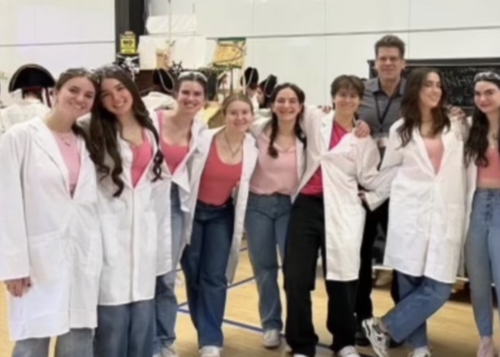The world of STEM pivots in a positive direction as women all over the world take a firm step into science, technology, engineering and mathematics.
Prior to the 1900s, it was rare for women to even be involved in what we would now call a STEM program or education. However, crucial milestones have inspired many women in later generations to dip their toe or dive headfirst into the field.
Murie Curie, a Polish chemist, won the Nobel Prize in 1903 for discovering radioactivity. This moment kicked off a series of major achievements for women in STEM. She was often the only woman pictured in official photographs of international STEM conferences. Later, she was joined by Lotte Meisner who worked in theoretical and quantum physics.
Isabelle Stone was the first American woman to earn a PhD in physics. Stone went on to be one of the first founders of the American Physical Society. The foundation holds meetings for physicists around the world to share their findings and advance the world of physics.
In the years following, the women working for NASA, the National Aeronautics and Space Agency, became a prevalent topic of conversation. Katherine Johnson was one of the first Black women to work at NASA and played a substantial part in calculating the trajectory of Neil Armstrong’s mission to the moon.
The foundation has welcomed women into STEM with open arms. Now, women are more represented in fields of psychology, biology and ocean sciences. While there are less women in engineering and physics, the numbers continue to grow.
Source: Statista
In our own Fieldston community, young female students are encouraged to get involved with STEM in a variety of different ways.
Paul Church, the head of the Science Department at Fieldston, is a champion for all students interested in STEM. His support is evident not only in the classroom but also in the Rube Goldberg Engineering club that he serves as advisor for. When asked about the gender ratio within his department, Church stated, “I am happy to say that the number of females in the science department outnumber the males.”
Church went on to explain that the number of women in his AT biology class often outnumbers male students in the class and that, overall, “we strongly support and promote our female science students.”
These numbers will only continue to grow, and support from respected teachers will continue being essential to said growth.
Source: Avery Simon
Similarly, Jon Lambert, a physics teacher at Fieldston who has been a part of our community for a number of years, encourages his female students to continue their love for science outside of ECFS.
At a recent alumni event, Lambert was thrilled to reconnect with former students who have done just this. Sarah Racz immediately came to mind when Lambert was asked about former students who continued with physics. Lambert explains that “Sarah went to Reed College in Oregon, then got her PhD in theoretical physics from UT Austin, and is now an assistant professor of physics at Sarah Lawrence College… I’m not sure what led her into this path, but she did spend quite a bit of time in the J. Robert Oppenheimer Lab.”
Lambert also pointed out another alum, Abby Chriss, who is studying advanced math, as part of this dynamic contingent.
The support both Church and Lambert maintain for their students sets an example for the type of support all students should receive when following their passions.
Current students at ECFS feel comfortable pursuing science in various areas. With encouragement from teachers and peers, it is easy for female students and students that have not been historically represented in their chosen fields to perform at their best.
The science department at Fieldston partners with MAGIC, an organization that connects female-identifying students with female-identifying mentors immersed in the scientific professions and pursuits. Zoe Gorman, a form V student at Fieldston, has been participating in MAGIC since her form III year. Gorman explains, “MAGIC was a fundamental part of my STEM career. It gave me a space full of other women who all had the same interests as me.”
Source: MAGIC
Gorman shows us how female students are encouraged and given the proper support to be who they want to be within the realm of science. She went on to state, “MAGIC has given me motivation to be myself, especially in a field that is predominately male. I am grateful for the opportunity to be part of such an impactful program.”
Fieldston’s Rube Goldberg club and Women in STEM club are both predominantly female. Sophia Thompson, a form IV student at Fieldston, shared a bit of insight on what it is like to be a female student in STEM currently at Fieldston.
Thompson shared that, “[there are] days where I’m too tired to ask a question, or intimidated by people I don’t know as well. In a new class scenario I find it hard, because often, being a female stem student at fieldston requires being an advocate for yourself and others.” However she also went on to say that her “favorite part about being a female STEM student at Fieldston is all of [her]science teachers. They support my pursuits of growth, answer my questions and push me to become the best student I can.”
It is clear that support and devotion from one’s teacher can go a long way. Being a female student in STEM can be hard. Those who persevere through any obstacle inspire others to chase after their dreams and perhaps even join the STEM field!









